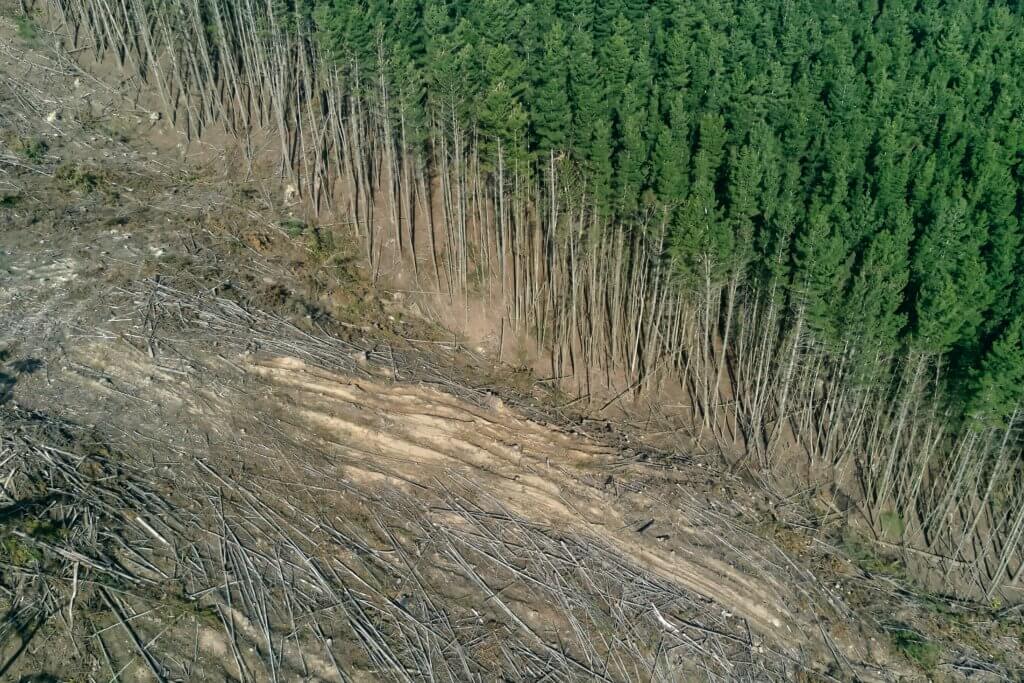
Dr Vishnu Prahalad
Questions answered by this expert
There are three parts to this question. The first one relates to the role of government, as opposed to the role of private sector in reducing carbon emissions and carbon dioxide concentrations in the atmosphere. The second part relates to role of Carbon Capture Technology, and indeed how we define this technology. The third part is the role of taxes in funding government initiatives.
Governments, such as the Australian Government, have an important role in providing public goods, such as a safe climate. They can support the provision of this public good by working with the private sector in helping them reduce carbon emissions at source (i.e. where they are emitted, such as through ‘smoke stacks’). Government assistance can take the form of public funding to develop new technologies to capture carbon at source, or to reduce carbon dioxide concentrations in the atmosphere, such as through reforestation and wetland regeneration.
This leads to the second part of my response, involving Carbon Capture Technology. Can this ‘technology’ involve activities such as reforestation and wetland regeneration? I work on wetland restoration projects that are funded by the Australian Government specifically to reduce carbon dioxide concentrations in the atmosphere. Wetlands do this by removing atmospheric carbon and storing it safely in their soils and lifeforms as ‘blue carbon’. Investing in these so called ‘nature-based solutions to climate change’ has the added benefits of conserving our biodiversity, and supporting food webs that in turn benefit fisheries.
But does the Australian Government need taxes in order to fund these initiatives, whether they involve smoke stacks or salt marshes? We know the answer is ‘no’ from the COVID19 experience from 2020, where the Australian Government did not need to tax us in order to fund their responses to the pandemic. Taxes have a number of functions in Australia, but we do not need to tax before we can spend/fund. If the Australian Government wants to fund climate change responses, the limiting factor is not taxes, but a combination of political will and imagination (if you like, ‘thinking outside the tax’).
A biome is typically a large ecosystem that shares common environmental characteristics that help differentiate them from other ecosystems/biomes. An example is the temperate rainforests of Tasmania, which are a distinct biome compared to tropical rainforests found in Queensland.
Almost all biomes are vulnerable to climate change. The nature and extent of this vulnerability changes across biomes, and also across different parts of world that have varying levels of other human induced threats. Some of these other threats include things like land clearing, introduced species and altered fire management practices. These threats can act cumulatively along with a changing climate to increase the vulnerability of that biome over and above what can be attributable to climate change. For example, climate change increases the vulnerability of temperate rainforests of Tasmania to fire, but this vulnerability can be further increased with certain forms of land use changes, such as with forestry and changed fire regimes.
My work is focussed on the wetlands biome, which is also highly vulnerable to climate change combined with other human impacts. In one recent example in Moulting Lagoon on the east coast of Tasmania, a large extent of wetland plants died due most likely to unusually high rainfall in 2022, the highest record of total rainfall for the last 62 years. Similar losses due to such ‘freak weather’ events are being reported from biomes across the world, further highlighting the need to take more urgent and stronger action on climate change.
Forests are habitats that are dominated by trees, these being plants that are woody and generally above 2 metres in height. The trees are dominant in the forest, but there are also the other smaller plants such as shrubs, herbs and ferns that form the ‘understorey’ of the forest (i.e. ‘under’ the canopy-forming trees). Then there are also the organisms that live in the soil, both above and below. These include countless number of invertebrates that live on the forest floor, both amidst the forest litter, made of debris such as leaves, bark, twigs and flowers/seeds, and in the soil (imagine some of the insects that live your garden soil!). And let us not forget the larger animals that also live in and depend on the forests, such as some of our mammals and birds.
The process of deforestation involves clearing of the forest (hence the ‘de’ in it!). The clearing mainly targets the trees in the case of forestry which involves growing and re-growing of trees so we can harvest the timber form the trees for various uses (e.g. building, paper-making). In other cases, such as happened in large parts of Australia and in other parts of the world such as the Amazon forests, clearing involves completely removing the trees, understorey plants, debris etc. to make way for other land uses such as producing food and fuels. Deforestation also occurs widely to make way for housing developments and associated infrastructure. These distinctions are useful as depending on the reason and nature of deforestation, and what aspects of the forests are cleared, the impacts on the atmosphere (and biodiversity) varies.
For example, if deforestation involves clearing of the trees, other plants and the debris, making way for houses and roads, all of the carbon stored in the landscape (both above and below the ground) is now potentially released back into the atmosphere thereby adding to our historic global greenhouse gas (GHG) emissions. Furthermore, by replacing a functioning forest habitat with a housing sub-division, the ability for those trees and other organisms to continue to take carbon away from the atmosphere and store it in the form of wood and other biomass has been compromised. Within forestry, depending on the nature of forestry practices, again large amounts of carbon can be lost into the atmosphere (where it is causing us harm) and also lost is our ongoing ability to remove harmful pollutants from the atmosphere and store it safely in the form of forest carbon.
The solution therefore is to manage our forestry practices in such a way to provide a net sink (not source) of carbon dioxide (which is a GHG). In other landscapes, the more we can integrate trees and other plants in creative ways, the more we can help remove carbon dioxide from the atmosphere, and also help us cool our cities, bring back birds to our backyards, and gain other benefits of experiencing nature in our daily lives.

This is a fascinating question! There are many aspects that need to be considered in thinking about, and responding to this question. Firstly, there is the issue of consumption, or over-consumption. With consumption, firstly, we need to recognise the distinction between ‘needs’ and ‘wants’. Needs such as shelter, clothing, food are essential for human survival and wellbeing, i.e., they are ‘necessary’ for survival. Many of these essential needs are even recognised under global agreements such as the Universal Declaration of Human Rights of 1948. Then there are the wants. These relate to our desires, and can change over time and external influences such as advertising. Wants are also necessary when they help improve our quality of life, over and beyond survival. But wants can also be endless, just as human creativity and imagination to imagine wants is endless. This is the territory we are in when we talk about ‘unnecessary items’.
Now to the second aspect of this question – with both needs and wants, and especially with wants, the issue with them is when they have a material footprint that then negatively impacts our climate. Let us pause here to note that there are also other negative impacts such as to biodiversity and social justice. So in other words, we can still enjoy an unlimited amount of seemingly ‘unnecessary items’ if they do not have a material footprint, e.g. playing Uno all day! However, it is quite another matter if the things that we do in order to enhance our perceived quality of life have a material footprint, e.g. buying a new sofa because it looks a little nicer than the older one. In this case, the harvesting, processing, manufacturing, packaging and transport of the new sofa all have contributed to greenhouse gas (GHG) emissions that add to our historic global GHG concentrations in the atmosphere to the extent that it now threatens our quality of life, and survival for some. The irony of it all!
Finally, on to interest rates, there is a broader question whether raising the interest rates is an effective way to address inflation, especially when the inflation might be caused more by supply-side issues rather than demand-side factors. Leaving that aside, what rising interest rates are expected to do is to reduce our purchasing power as we now are paying more on our loans and mortgages, and have lesser money to spend on other things, especially on satisfying wants (e.g. not buying a new sofa, as opposed to paying for needs, such as housing, food etc.). Therefore, as we tend to buy fewer sofas (and other such wants/desires), we are requiring fewer sofas to be made, and in effect, reducing the carbon pollution from the sofa industry. However, there are several considerations here that would mean that: a) the net effect on climate change is not going to be significant enough (as happened with COVID19, where despite fewer people flying overseas for holidays, emissions still did not reduce to sustainable levels); b) the regressive nature of interest rate rises and associated ‘austerity’ in the tightening of budgets for households might have poor social outcomes, and in turn, poor outcomes for social, democratic and climate welfare in the long run (see what happens to countries around the world where people are unable to pay for essentials).
In conclusion, the answer to the question is: No, as it is neither sufficient in terms of reducing GHG emissions nor is it a socially progressive approach.
We asked a wetland ecologist, a fire scientist, and a Tasmanian Aboriginal person to answer this question. Their answers may surprise you - because climate change is already affecting Tasmania.
Indigenous perspective
Tasmanian Aboriginal People have been seeing climate change effects for well over 15 years now, we have noticed these effects on our traditional cultural resources such as the marineer shells, Mutton Birds, and dog wood trees/saplings.
Marineer Shells are used in traditional shell necklace making (mental health, connection to country). The shells come in a variety of colours and sizes. They are an iridescent metallic green or blue colour and are often representative of status or valued highly as a trade item, depending on the quality, quantity, and shell variety.
Some of the climate change affects which has been seen on the shells are discoloration, spotted corrosion, thinning of the shell walls, and becoming more brittle because of this. Their numbers are reducing, the water they live in has become more acidic, the weeds they live in and on have reduced in number and coverage per hectare, in some cases being pushed out of the area by other weeds.

Mutton birds are being affected by micro plastics in the water, and the blockages are interfering with their energy levels for their long-haul migrations and breeding cycles. Dog wood (used for making spears and clap sticks) saplings are growing at a faster rate and are being shown to not grow as straight nor with the same internal strength qualities that have been apparent for thousands of years.










